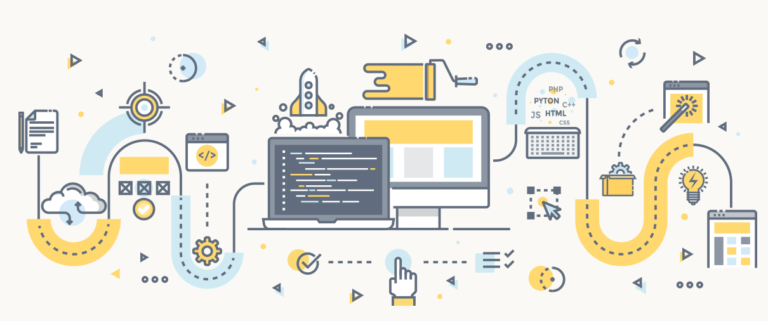Network Softwarization: what is it all about?
Published: June 12, 2023

Nowadays we witness a deep transformation in the Telco Networks bringing a lot of challenges and opportunities for the whole industry.
In fact, after growing in maturity in the late 2010’s, Network Softwarization is still a revolution in progress as the whole telecom industry needs to evolve from a pre-integrated model to a more open and delayered model.
Analogy with a well-known industry
To understand the software transformation of the network (aka “Network Softwarization”), let’s use an analogy with the video games industry.
You remember for sure small electronic devices from the 70’s, also named “electronic games”! They were manufactured by one vendor – you had to buy the game and the device together, with total software and hardware adherence, no possibility to change or add another game, no connection possible with other players or reconfiguration…
Similarly, telecom networks are composed of a multitude of network equipment, that could be viewed as a very big “electronic game” with various functions for landline and mobile services (e.g. internet or voice connections, security or multimedia functions …). In their legacy implementation (until mid 2010’s), they were very similar to 70’s electronic games: total software and hardware adherence.
In the video games’ industry, a big change came in the 80’s from video game consoles. A user could run different types of games, using ROM (Read Only Memory) cartridges (and software inside them), bought independently from the main hardware. It was the beginning of what we could call “Videogame Softwarization”. This extends nowadays to internet-connected-tablet or smartphones, over which a user can instantly load a new game chosen on a marketplace, with the possibility to interact with other players in the world.
This deep transformation is happening in the network domain: more and more network equipment is implemented as software hosted on commodity servers. This allows operators to run different types of network equipment in common datacenters. That’s what we call “Network Softwarization”.
A lot of promises for operators and partners
“Network Softwarization” brings a lot of promises for operators and deeply changes the way networks are operated.
With Network Softwarization come new opportunities for operators, linked to the “unmanufactured” and more agile nature of software (at the opposite of monolithic hardware solutions).
Firstly, software can be managed remotely, with automation routines to on-board, activate, configure, update… For instance, in the past, legacy equipment’ deployment required a truck to deliver a specific piece of hardware, with on-site installation/configuration and manual connection to the network. With Network Softwarization, the operator does not get a piece of hardware anymore, but a “cloud native” software application. The operator will then remotely install and connect to its network using existing datacenters. Like in the IT world, agility is the main promise.
Secondly, as it is using commodity servers, operators can mutualize technical environments, datacenters, teams managing infrastructure, teams & tools managing integration of software over this infrastructure, and eventually mutualize the infrastructure itself. To take again the same example, in the past 2 legacy equipment required 2 trucks and 2 technical teams to install and configure the hardware on-site (remember that the hardware was specific to each network equipment). Nowadays, it is possible to use the same teams and tools to remotely install the network software over the same datacenter.
Last but not least, as new software can be deployed easily and quickly over existing datacenters, new on-demand services can be developed for external partners and developers. Operators will be able to meet new customer expectations, like a direct digitized online access to new services, a possible customization of the network functions, and a much more seamless experience for the customer, the opportunity to try services, pay as you grow, and develop a full business ecosystem using on-demand capabilities of the network through APIs. And by the way, this evolution is already visible through the GSMA Open Gateway initiative.
4 pillars to make it a success
All transformation paths do not bring the same benefits, and operators should build on 4 pillars to get the full promise of Network Softwarization.
Transforming critical network equipment like 5G packet core network or mobile subscribers’ databases into “cloud native” applications is not an easy task, and the whole industry is struggling with that evolution. To make it a success, we identify 4 disruptive pillars, with increased benefits when combined, that are 4 challenges to tackle in the coming years.
The first one is disaggregation: like with construction games for children, network equipment that were once monolithiccan now be built from several blocks or pieces of solution coming from different partners. We move from proprietary and closed solution, towards totally decoupled and open components which are recombined to form a complete solution. This allows operators to work with new partners (pure SW players) and benefit from the innovations of a more open market.
The second one is virtualization: as several network equipment can share the same infrastructure, hardware resources can be pooled (compute, storage, Input/Output). Large economies of scale come from mutualization (linked to the cloud infrastructure model but also in skills and operations). The “cloud native” level of virtualized network functions is a key success factor, as well as the availability of a truly open telco cloud infrastructure to host them.
The third one is automation: as explained before, softwarization comes with many automation possibilities. This will allow to manage the increased complexity of disaggregated/virtualized implementations – rom the integration phase using continuous automated delivery (leveraging on Ci/Cd, DevSecOps and Telco cloud, Gitops) to the operation phase targeting Autonomous network models with closed loop automation and machine learning/AI.
The last one is the programmability of the network: Network services become ‘As a Service’ in a real on-demand mode, to develop new services for B2B and B2C markets. APIs are key enablers for this transformation. If the network reproduces cloud business models with open platforms and marketplaces, the user community will be able to extend the original platform to new functionalities/capabilities and bring the best innovations to the operators’ customers in an open and delayered model.
Authored by David Freyermuth, Program manager of the Network Cloudification/Virtualization program at Orange Group


